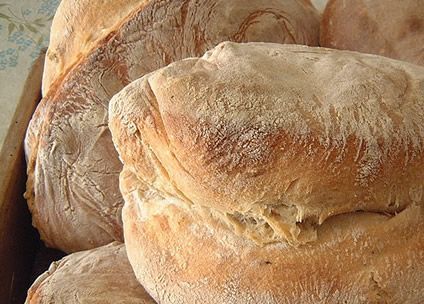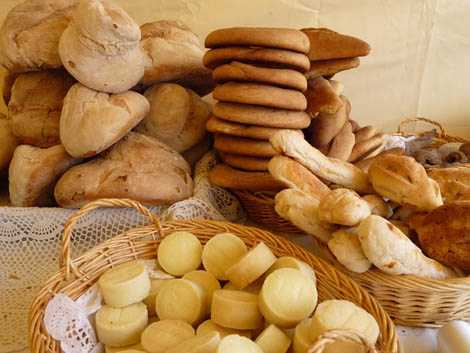 How do you get bread, this essential food we love so much?
How do you get bread, this essential food we love so much?
From Asia to Egypt to its spread throughout the world, bread comes in many different forms and composition. With the cultivation of the first cereals, bread was made only with flour and water, known as unleavened bread, it had a hard consistency and flat appearance.
To make bread you need flour, obtained from cereals, water, salt and yeast. The first step is to mix and knead all the ingredients. The type of flour (wheat, rye, corn, barley, mixture, with seeds, nuts, etc.) determines the bread that is eaten.
So what makes bread rise?
To leaven the dough, to make it lighter, it is essential to use yeast, which is nothing more than a mass of living cells, yeasts Saccharomyces cerevisae.
These unicellular microorganisms belonging to the group of fungi, are commonly known as baker's yeast.
How do these yeasts work?
 By mixing yeast and water (preferably lukewarm) with the flour, we are providing food and energy to the yeasts.
By mixing yeast and water (preferably lukewarm) with the flour, we are providing food and energy to the yeasts.
Like? Through the sugar in the flour, which will be consumed during fermentation. The cereals from which the flour comes, are very rich in complex sugars that are broken down into simpler sugar units, ready to be assimilated, while we carry out the digestion.
During the fermentation process, yeasts consume sugar and produce gas and alcohol, carbon dioxide and ethanol, respectively.
It is this gas that will “push” the mass until it increases in volume. By mixing flour and water, we are creating a network with the help of a wheat protein, gluten.
In this network, the gas is trapped and when we prepare the dough for baking, it is possible to see this tangle and some carbon dioxide being released when the dough loses volume.
This process is temperature dependent, as yeasts need to grow and reproduce for the dough to rise. This happens when the temperature reaches values between 27 and 32°C. If the temperature is too low, the transformation of sugars is too slow, if it is too high, the yeasts die.
And what happens to the gas and alcohol that is formed?
When baking bread, the yeasts die, all the gas that was formed and the alcohol produced are released, evaporate. When we cut or break bread, we can observe the empty spaces, alveoli in the bread, where the gas was.
For those who like to enjoy the tasty bread crust: did you know that this is obtained through two types of reactions that occur during baking? The first, between sugar molecules (caramelization reactions) and the second, between sugar molecules and proteins (Maillard reactions). These are the reactions responsible for that unmistakable taste and smell.
Science in the Regional Press – Ciência Viva



















Comments